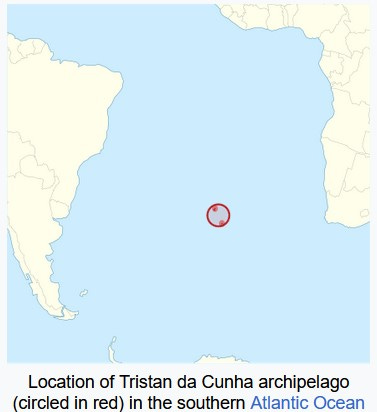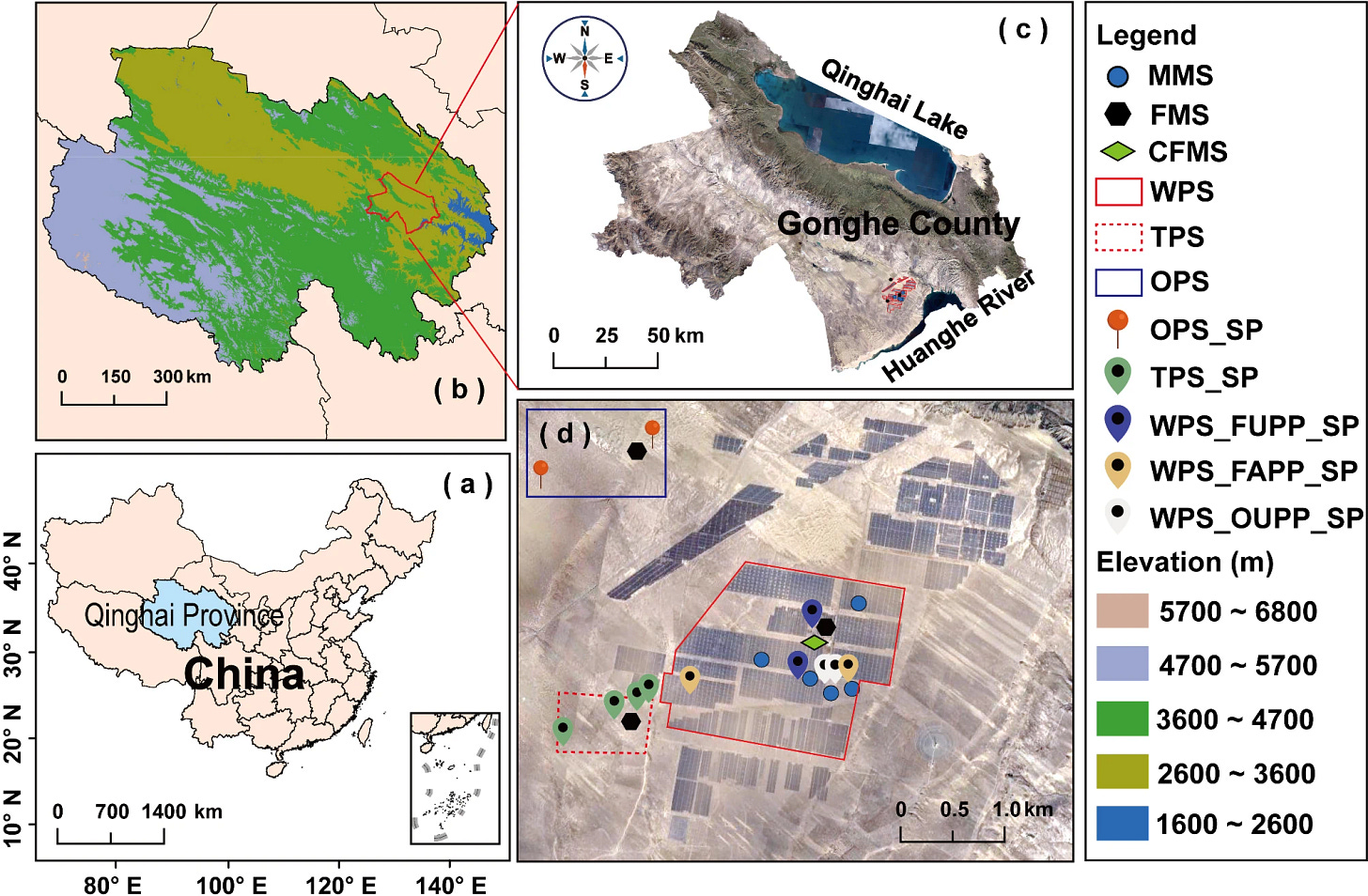The Weekly Anthropocene, October 16 2024
Rhino dehorning in South Africa, solar farms boosting desert plants, songbird-saving parasitic wasps, Antarctic moss, President Biden's AMAZING new rule to stop lead pipes, Airloom, Europa, and more!
South Africa
Rhino poaching in South Africa’s Hluhluwe-iMfolozi Park has declined by 80% since a rapid-response dehorning program began in April 2024. Notably, this park was previously one of the last major wild rhino strongholds not using dehorning to prevent poaching, which had led to it being very heavily targeted by poachers in recent years. Now, over 1,000 individual rhinos in the park have had their keratinous horns removed by conservationists, and eight orphaned rhino calves were found and rescued in the process. Excellent work!
As decentralized rooftop and small-scale solar continues to surge across the country, Cape Town is building a 7 MW city-run solar farm, the first such in South Africa.
A new study from South Africa’s Witwatersrand University finds that the iconic baobab tree appears to be still thriving across southern Africa in the Anthropocene.
China
An in-depth new study at the giant 1 GW (1,000 MW) Gonghe solar park in Qinghai Province, China, has found that the presence of solar panels had multifaceted positive effects on the local arid desert ecosystem. The solar panels provide shade and a windbreak, allowing more moisture to accumulate in the soil below, and the researchers found that the area under the solar panels had higher plant diversity, plant biomass, and microbial diversity than the surrounding desert.
As solar farms spread, we’re seeing similar findings around the world. A recent study from Arizona State University has found that the cool shade of solar panels can serve as a growth-enhancing “nursery” for small American desert plants and “biocrust” species like mosses, lichen and cyanobacteria.
It’s starting to look like building large-scale solar farms in arid deserts is not, in fact, an ecological tradeoff - it’s a win-win! The Biden-Harris Administration’s visionary Western Solar Plan is looking like a better and better idea. Spectacular news!
“Photovoltaic development has primarily induced positive effects on the region’s microclimate, physical and chemical properties of the soil, and diversity of the plant and microbial communities, as supported by recent findings.”
-Wu et al. 2024, Nature Scientific Reports
China’s Dongfang energy company made a surprise announcement that they had built the world’s largest-ever wind turbine, with the blades reportedly 310 meters (1,017 feet, or over 2.8 U.S. football fields) in diameter. One individual turbine has an electricity-generating capacity of 26 megawatts, a big leap from the previous record of 18 MW. Wow!
Tristan da Cunha




The Tristan da Cunha islands are the most remote inhabited archipelago in the world, a tiny British possession in the middle of the South Atlantic only accessible by sea. These islands are home to several unique endemic species, including the critically endangered Wilkins’s bunting (Nesospiza wilkinsi), which eats the fruit of the native tree Phylica arborea. Both species were gravely imperiled by the arrival of a sap-sucking scale insect in 2011, which left the trees vulnerable to mold infestations that in turn imperiled the buntings’ food supply.
Now, conservationists have completed a bold intervention: introducing the Microterys nietneri parasitoid wasp to the islands to keep the insect numbers down. The first release took place in April 2021, a wasp population has established itself, and the forest has begun to recover, with scientists hopeful that the buntings have been saved from extinction.
As the Novak et al. review paper discussed, we’ve gotten really good at species translocation and biological control agent introduction - often, the best response to a harmful invasive species is to add another “immigrant” species to counteract it! This is another great example of proactive interventionist conservation. Great work!
Algeria
Algeria is planning a $5.4 billion investment to expand its already-substantial desalination facilities to ensure consistent drinking water supply for its 47 million people, most of whom live between the Sahara and the Mediterranean. Five new desalination plants are due to start operating this year, and six more by 2030, with all 11 able to produce up to 300,000 cubic meters of drinkable water per day. This tech is scaling up fast; Morocco, Namibia, Saudi Arabia, Spain, South Africa, and California have also made major desalination investments in recent years.
Colombia
Colombia recently released a $40 billion plan for nationwide climate adaptation and clean energy transition (including $14.5 billion for renewables, $8.5 billion for ecosystem restoration, $3.5 billion for sustainable agriculture, and more!), and is actively seeking foreign investment to make it possible. The South American nation is reportedly already in talks with Germany over potential debt-for-nature swaps. Relatedly, Colombia is one of the very few fossil fuel-producing countries to support the proposed Fossil Fuel Non-Proliferation Treaty, and will host a global biodiversity conference in late October.
Antarctica

A new study analyzing Landsat data archives has found a substantial increase in vegetation cover on the Antarctic Peninsula and its nearby islands, from less than 1 square kilometer in 1986 to nearly 12 km² in 2021.
This is a small area, but it’s notable as a historic surge of vegetation on Earth’s ice and rock-dominated southernmost continent. This new vegetation appears to be mostly moss, and will likely eventually build up a new soil layer, making it possible for other plant colonists to arrive on these rocky fringes in the future. Fascinating events.
South Korea
After years of restoration work, the Han River in South Korea is recovering. A 49.5-kilometer natural embankment has been built to help prevent erosion, while the number of individual trees and wildlife species observed along the Han has increased sharply, from 1.9 million trees and 1,608 species in 2007 to 3.65 million trees and 2,062 species observed in 2022. Another great river renaissance to join the worldwide trend!
United States
The Biden-Harris Administration’s EPA has finalized a truly heroic new rule that legally requires every single public drinking water system in America to rip out and replace every single neurotoxin-bearing lead pipe within 10 years. This is a triumphant capstone to President Biden’s multifaceted leadership on this issue! The Bipartisan Infrastructure Law included $15 billion in new funding to support this now legally-required mass replacing of lead pipes (much of which has already been sent to lead-afflicted cities from Detroit to Denver!), and the Biden-Harris Administration recently launched a new global initiative to fight the scourge of lead poisoning around the world.
“Folks, what is a government for if it cannot protect the public health?
We’re finally addressing an issue that should’ve been addressed a long time ago in this country.”
—President Joe Biden
(Notably, lead poisoning is also a climate issue: higher lead poisoning levels are observed in warmer weather for both animals and people, as warmer temperatures make lead more “bioavailable” and likely to poison the body).
It’s entirely possible that in terms of sheer raw gains in human well-being, leading the charge to end mass-brain-damaging lead poisoning will be the single greatest, most epoch-shaping, and just plain heroic legacy of the Biden era. Absolutely SUPERB work!
“We’ve known for decades that lead exposure has serious long-term impacts for children’s health. And yet, millions of lead service lines are still delivering drinking water to homes.
President Biden is putting an end to this generational public health problem. With the Lead and Copper Rule Improvements and historic investments in lead pipe replacement, the Biden-Harris Administration is fulfilling its commitment that no community, regardless of race, geography or wealth, should have to worry about lead-contaminated water in their homes.”
—EPA Administrator Michael S. Regan.
Just days after the last of four dams was removed in September 2024, salmon are returning to the Klamath River, with Chinook salmon observed migrating into previously blocked-off waters on October 3. Rewilding works! Great news.
Bill Gates and the U.S. Defense Department are both investing in Airloom, a new startup trying to reinvent the wind turbine. Airloom’s design has the wind pushing blades along a “racetrack” or “rollercoaster”-like course instead of spinning in place, hopefully improving the technology’s scalability and learning rate with cheaper modular components that are more easily transportable. Wind turbine progress has historically come in the form of making bigger and bigger wind turbines, but that’s starting to make it physically difficult and highly expensive to move or build them, so Airloom is trying for a more solar panel-like “lots of smaller ones” strategy. The company plans to build a pilot project in Wyoming in 2025! This work has impressive potential.
New York City held a demonstration of new municipal extreme weather response drones capable of breaking windows to help rescue people trapped in buildings.
The U.S. Senate unanimously voted to approve the Wildlife Innovation and Longevity Driver (WILD) Reauthorization Act, ensuring continued funding for wildlife conservation projects in all 50 states and abroad.
More stories from the epic Biden-Harris Boom:
In 2017, the portion of Americans installing rooftop solar who got a home battery as well was less than 1%. A new report has found that in 2023, that residential attachment rate rose sharply to 12.3% as battery technology improves and policy supports kicked in. Decentralized clean energy continues to surge!
California now has over 10 GW of grid-scale battery storage capacity!
Toyota is investing $500 million in Joby, a U.S. electric air taxi startup that plans to have its eVTOL craft offering rides in NYC by 2025. Electric flying cars, folks!
Hyundai has begun producing Ioniq 5 electric SUVs at its new IRA-incentivized factory near Savannah, Georgia!
Five of America’s ten largest remaining coal plants now have planned retirement dates, with a sixth potentially on the way soon.
New research from Loyola University finds that utility-scale solar farms don't lower the property values of nearby homes, and in some cases may slightly increase property values!
The United States continues to rapidly improve its national spacefaring capabilities across a range of domains:
The Europa Clipper probe from NASA was launched on October 14, 2024, and is set to arrive at Jupiter’s enticing icy moon in April 2030 to explore for possible water plumes and perhaps even life.
NASA is also rapidly improving Earth’s increasingly impressive asteroid defenses, fresh off the highly successful DART asteroid redirect mission in 2022 and planning to launch the NEO Surveyor space telescope within five years to spot potential city-killers far enough in advance to do something about it.
SpaceX just successfully caught a descending first-stage reusable giant rocket booster with giant metal arms, potentially indicating an imminent rapid expansion of humanity’s capability to move mass into orbit.
And Google is finalizing plans to launch FireSat, a pioneering AI-guided constellation of satellites that will be able to spot wildfires anywhere in the world with unprecedented detail, with the data used to rapidly inform firefighters.
As our space tech improves, we’ll be able to understand and defend our home planet better than ever before, while beginning exploration of other worlds! Awesome.









Really hopeful and fascinating news! Thank you for the work you do :) it brightens my week.